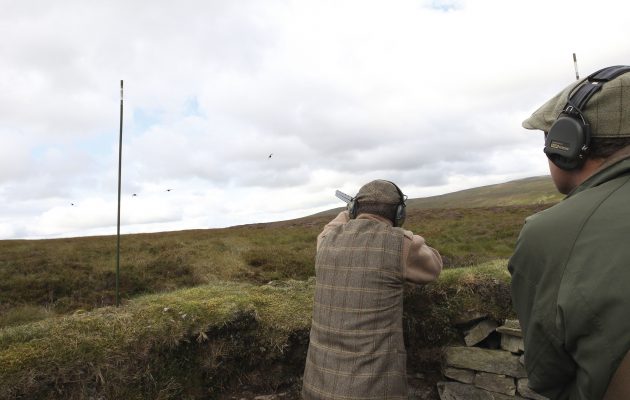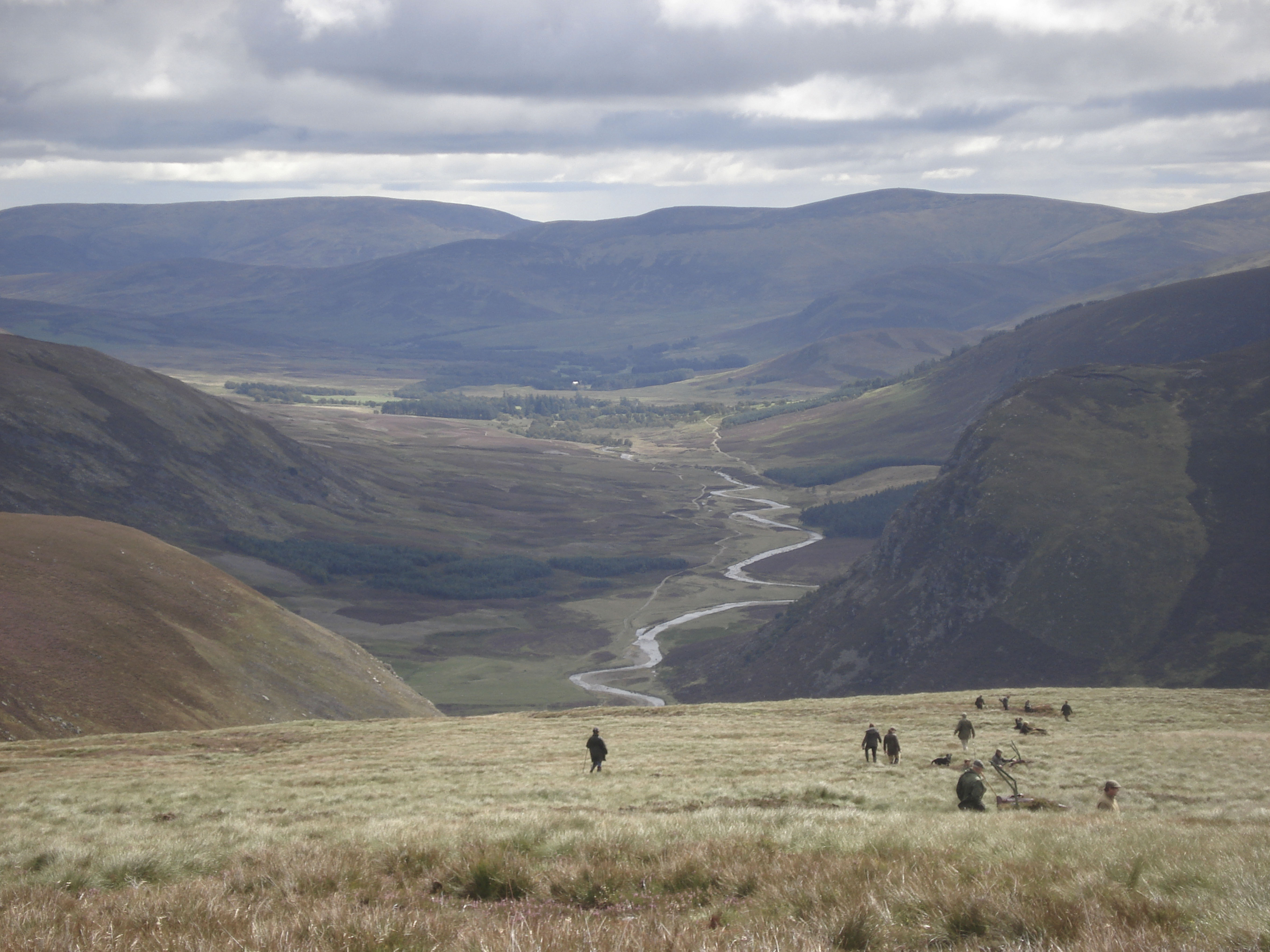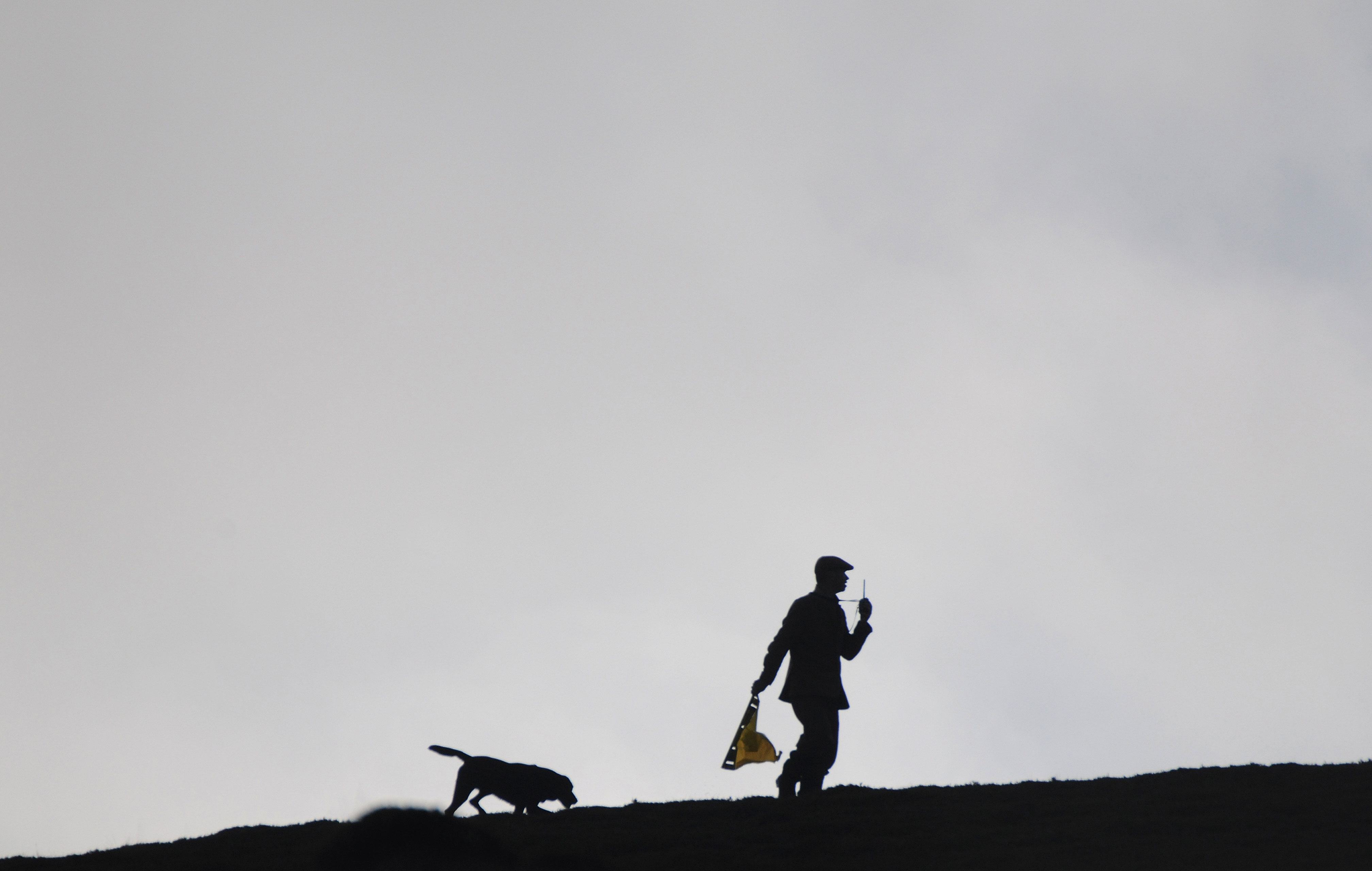Win CENS ProFlex DX5 earplugs worth £1,149 – enter here
Grouse shooting: why moorland managers are conservation heroes

If the critics are to be believed then the picturesque patchwork of heather glens and valleys that comprise our nation’s grouse moors is a battlefield between gamekeepers and wildlife. Some groups and individuals who call themselves conservationists believe that the faults and failings of driven grouse shooting are so systemic and integral that it is time to deliver the final blow in this perceived battle. They want to ban driven grouse shooting.
Although critical voices remain few in number, it is important they are not allowed to sound off unchallenged. Those who understand grouse moor management and the benefits it brings know full well that evidence suggests a ban on shooting would make life worse not better for the wildlife that the conservationists seek to protect.
Evidence from the front line
This season I spent two weeks working as a loader on an estate in the Angus Glens on the east coast of Scotland. Unlike other parts of the country, the grouse counts on this estate in the Cairngorms National Park have increased from last year. The later hatching on the higher ground meant the chicks avoided the cold, wet weather in May, which caused a lotof problems on other moors.
Although the early summer counts were encouraging, red grouse are wild birds and as we wait at the start of the first drive we don’t know how many will fly over the butts. The remote landscape all around us may feel wild but we do not have to look far for signs that the beauty of this moor is the result of careful management. The purple carpet of young heather in front of our butt is the result of a heather fire from two or three years ago, and the freshly stocked grit pile behind us is a reminder of the work that is done to help the grouse and other ground-nesting birds to survive in what can be a harsh environment.
Long before we get our first sight of the king of game birds, we glimpse the wealth of other wildlife that thrives on this moor. Mountain hares dart between the butts, skylarks and lapwings fly over our heads and a dragonfly lands on one of the butt sticks to break its journey before heading off into the westerly wind. As the beaters continue their advance over the moor, a good number of grouse also fly over the butts and by the end of the drive the barrels of my gun’s pair of Holland & Holland 20 bores are beginning to feel quite hot.
Hard work and large wallets
The fact that grouse moors can sustain a good number of grouse as well as an abundance of other wildlife is no surprise to those involved in grouse shooting. The days of eye-watering bags, triple guns and game lists being recorded on the wall of the Victorian gunroom on this estate are unlikely to be seen again. The theory and practice of gamekeeping is now firmly centred on the wellbeing of the moor and the wildlife that is sustained by it.
In a recent survey, shooting providers across the country were estimated to spend nearly £250 million a year on conservation, which is more than eight times the amount the RSPB spent on conservation on their reserves in 2013. Around £100 million of this money is spent by grouse moor owners and shooters, and supports the equivalent of over 2,500 conservation jobs.

A line of butts with a spectacular backdrop – grouse shooting almost by definition takes place in stunning landscapes. This also equates to wild weather and inhospitable terrain. Working in this environment in midwinter is not for the faint-hearted.
The success of our first drive is the result of a year of hard work by the gamekeepers, involving predator control and long, sleepless nights in springtime looking for foxes. It is down to the exhausting days in late summer and autumn controlling heather fires, and the year-round tasks of road repairs, stocking grit piles and spraying off bracken and ragwort. These moorland management practices help the grouse and common sense suggests that they should assist other ground-nesting birds too. There is now a strong body of evidence to support this view.
Despite this, some people still think that the current laws and extensive codes of conduct for grouse moor management do not go far enough and a total ban is required. The irony is that many aspects of grouse moor management to which these groups and individuals object are now proven to be beneficial for conservation.
Burning pays dividends
Some opponents of grouse shooting object to the practice of heather burning, which they claim damages the moorland. Contrary to what has been suggested, heather burning does not involve burning the peat beneath the vegetation – in fact great care is taken to avoid this because burning the peat would delay the regrowth of the heather.
Burning heather as a management practice on grouse moors is carried out to increase diversity of heather age and structure for the grouse population, as well as preventing the build-up of old heather and woody species. Burning takes place in patches on a rotational eight-to-12 year cycle to ensure there is a mixture of older heather for protection and nesting, younger heather shots for feeding, and a fresh burn where regrowth is just starting. The aim is to create lots of little habitats across the moor so that within one hectare of moorland the grouse and other ground-nesting birds have the full range of habitat they require.
A Natural England review concluded there was strong evidence that burning and predator control correlated with higher densities of red grouse, golden plover, curlew, lapwing, redshank and ring ouzel. The RSPB recognises the value of controlled burning to “increase the suitability of the reserve for key breeding birds such as hen harriers, short-eared owls, merlins and curlews” and there is a burning programme in place on its reserves at Loch Garten and Hobbister.
Repelling antisocial visitors
The conservation of heather moorland is also helped by controlling invasive species. Over the past 10 years the Moorland Association members have treated around 65 square miles of invasive bracken to stop it swamping other moorland plants and providing a breeding ground for ticks. On days when it is too wet and misty to shoot, the beaters on this estate spend their time pulling up birch saplings from the lower ground of the moor to prevent forest encroachment. This intensive work is carried out because grouse shooting provides a vital financial incentive to conserve heather moorland, despite economic pressures and the attractiveness of government subsidies for forestry and farming.

Moorland keepers spend their whole lives in this habitat and their work benefits a wide range of species, not just the red grouse.
Other opponents of grouse shooting object to the use of predator control in grouse moor management. Gamekeepers use a range of legal traps, night-time lamping excursions and shooting to control the number of predators such as weasels, stoats and foxes, which can cause terrible damage to the grouse population, particularly during nesting season. As with heather burning, a range of additional species benefit from this management practice. Scientists from the Game and Wildlife Conservation Trust (GWCT) undertook an eight-year experiment that looked at the impact of predator removal on the moorlands at Otterburn in Northumberland. They found that the breeding success of grouse and other ground-nesting birds such as meadow pipits and wading species was three times higher when foxes and crows were removed than when they were not subject to control.
On this estate in Angus the numbers of rare black grouse have increased significantly thanks to a joint initiative with the GWCT. Black game leks are usually found on the lower ground where predators can cause a lot of damage and the management in place has helped the population to recover.
Birds of prey benefit from grouse shooting too
One of the most damaging criticisms made against grouse shooting is that moor management is at odds with protecting birds of prey such as hen harriers and eagles. Fifteen species of birds are now protected by law and successful prosecutions have been made by police forces in England and Scotland, where best management practice was not followed. Despite these prosecutions, the interests of grouse moor management and birds of prey are more interdependent than opponents would like to admit.
Studies on Langholm Moor showed that when gamekeepers started predator control and diversionary feeding for birds of prey, the number of hen harriers rose from two pairs to 21 pairs. However when the management stopped, the hen harrier population at Langholm plummeted to two pairs. Without gamekeepers, the number of foxes, carrion crows and other generalist predators increased significantly, which had a devastating effect on the ground-nesting hen harriers. To remain at high density the hen harriers needed the gamekeeper just as much as the grouse.
The Angus Glens have their fair share of birds of prey. There are two sea eagle nests on this estate and all four chicks that hatched in the spring have survived. Such a high survival rate is uncommon and this has been helped by the abundance of food for eagles on the moor – particularly mountain hares – which the League Against Cruel Sports oddly claims are at risk of extinction.
Conservationist keepers
Opponents are quick to label grouse shooting as “wrong” but when the reasons for their views are explored it is clear that any moves to ban driven grouse shooting could not be justified on the basis of conservation reasons.
Critical voices are unlikely to disappear and it is essential that the debate about grouse shooting is based on evidence to prevent policy affecting our moorlands and the livelihoods of thousands of people being based on prejudice and misconception. And the evidence shows that the real conservationists are not those who call for grouse shooting to be banned. In reality they are the gamekeepers who manage our moorlands day in, day out.
Related Articles
Get the latest news delivered direct to your door
Subscribe to Shooting Times & Country
Discover the ultimate companion for field sports enthusiasts with Shooting Times & Country Magazine, the UK’s leading weekly publication that has been at the forefront of shooting culture since 1882. Subscribers gain access to expert tips, comprehensive gear reviews, seasonal advice and a vibrant community of like-minded shooters.
Save on shop price when you subscribe with weekly issues featuring in-depth articles on gundog training, exclusive member offers and access to the digital back issue library. A Shooting Times & Country subscription is more than a magazine, don’t just read about the countryside; immerse yourself in its most authoritative and engaging publication.







